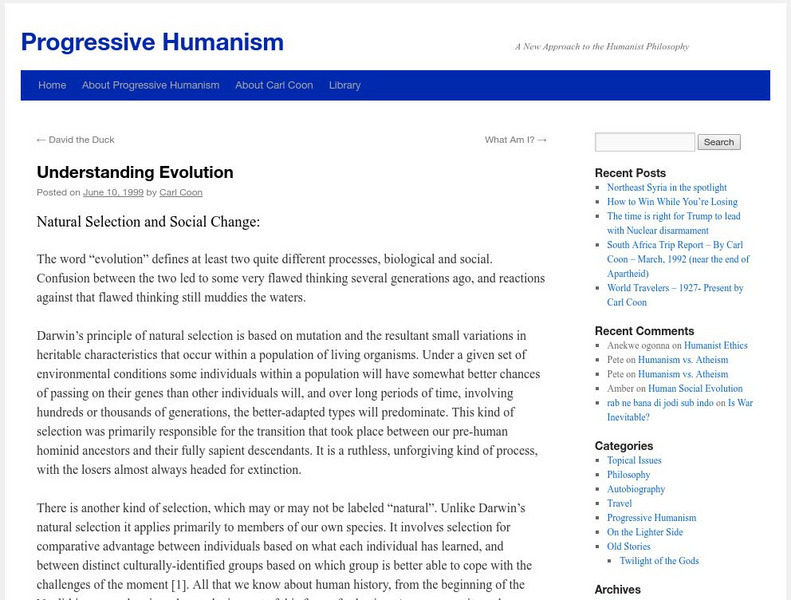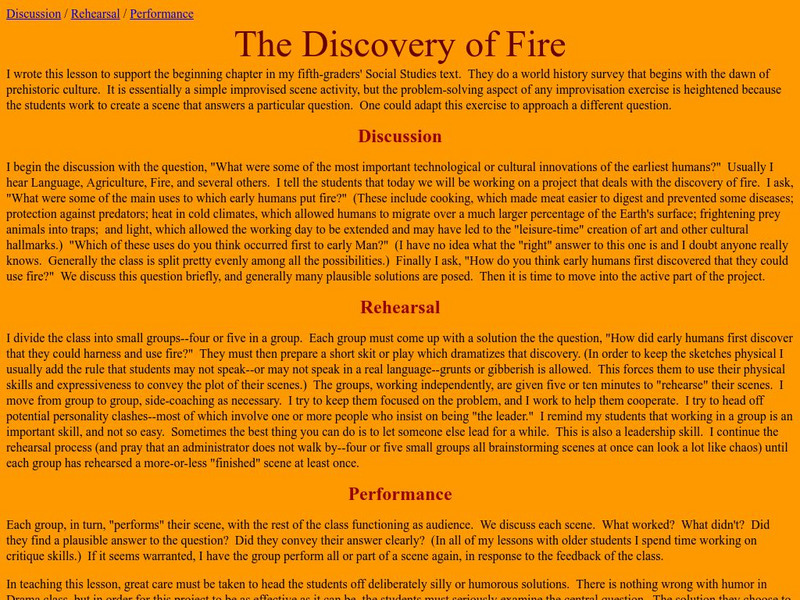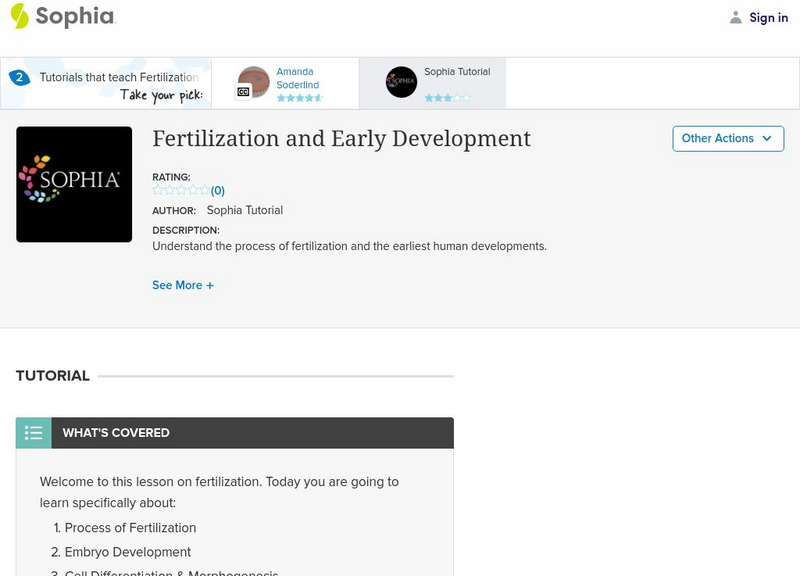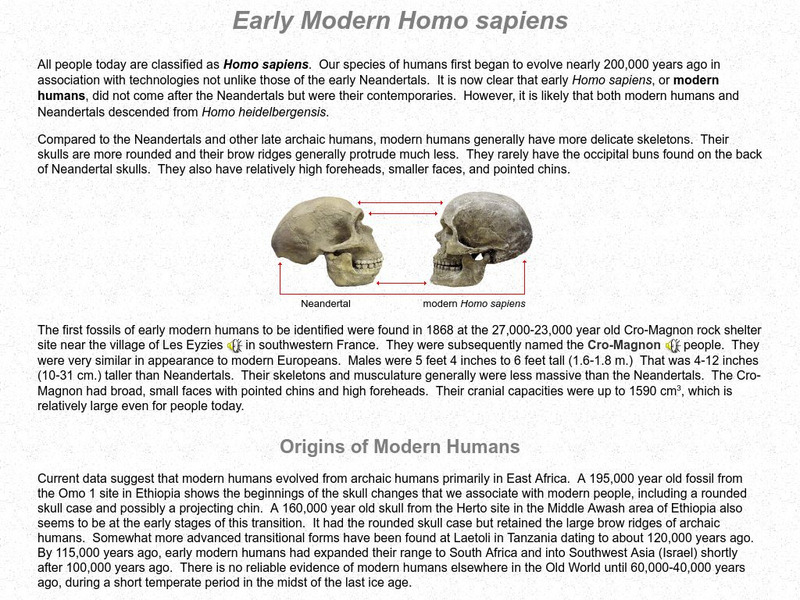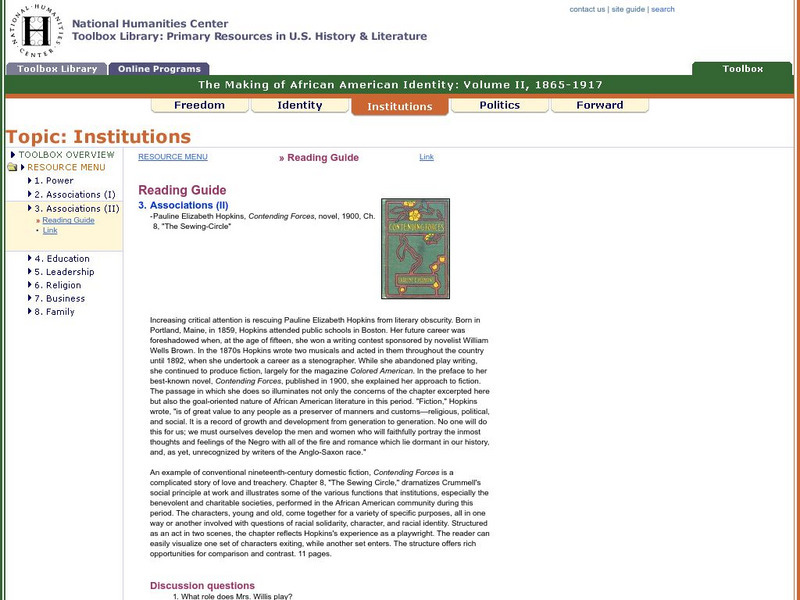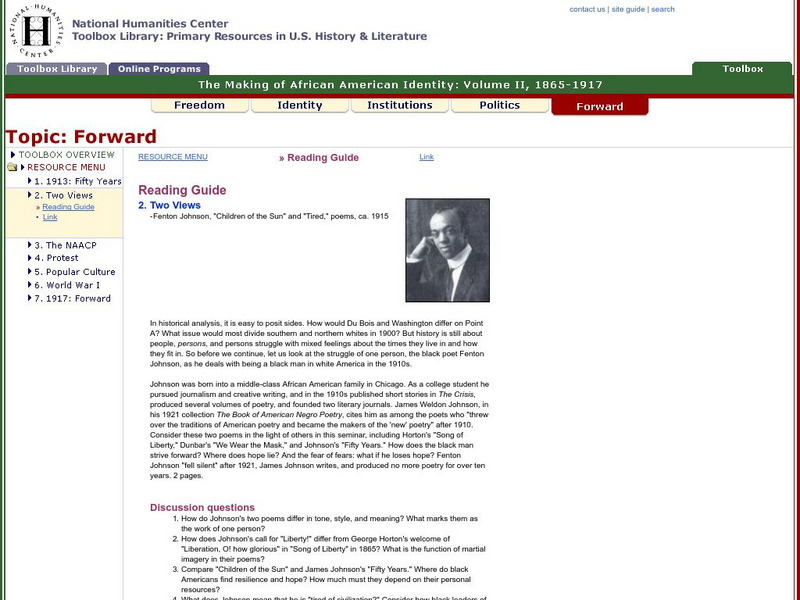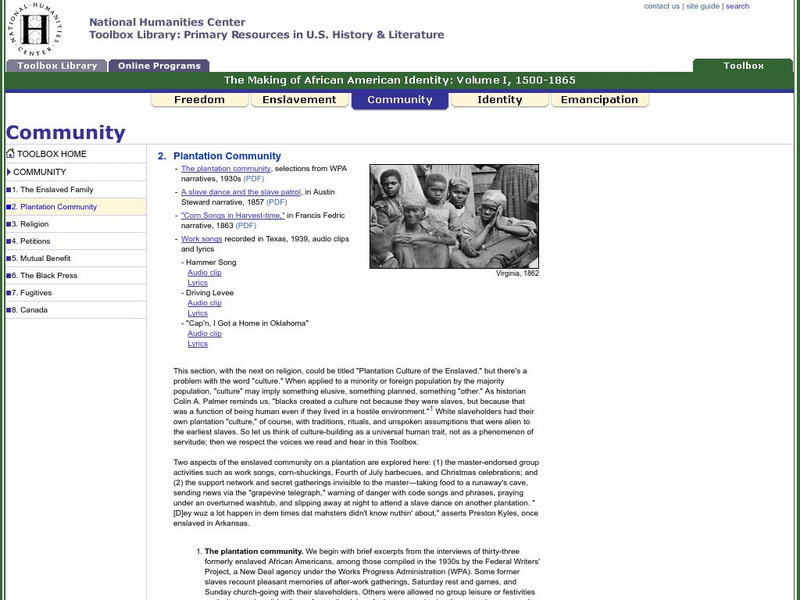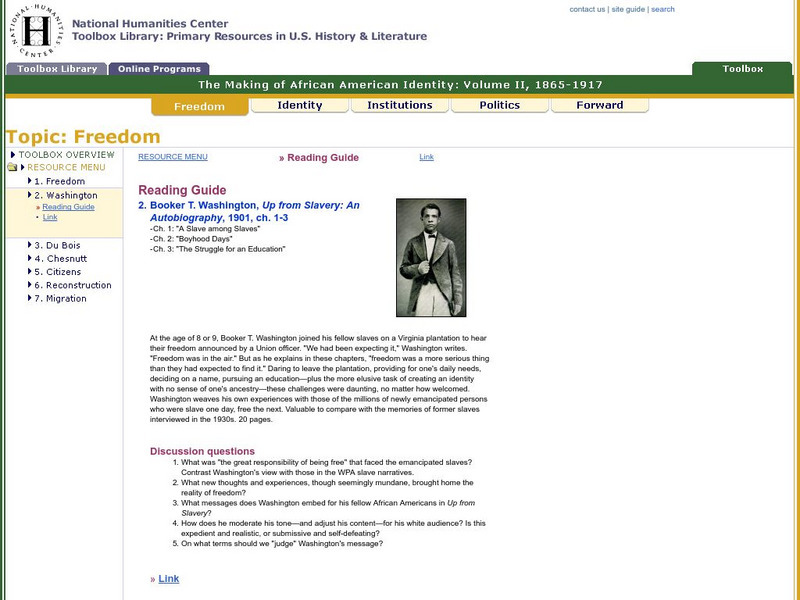Khan Academy
Khan Academy: Gallery: What Makes Humans Different?
A gallery of pictures exploring how humans have evolved to use tools, use language, and much more.
Palomar Community College District
Palomar College: Neandertals
Who were the Neandertals? Where did they live? Find thorough research about these early humans offered by Dr. Dennis O'Neil.
Khan Academy
Khan Academy: Theories of the Early Stages of Language Acquisition
Language is the primary method of human communication, but there are also other ways to communicate without the use of language. Language in its most complex form is unique to humans, although some animals have been found to have basic...
Khan Academy
Khan Academy: Us History: 1945 1980: Early Steps in the Civil Rights Movement
A quick comprehension check over the early steps in the Civil Rights Movement.
Khan Academy
Khan Academy: Us History: 1800 1848: African Americans in the Early Republic
A quick comprehension check over African Americans in the early republic of the United States.
Khan Academy
Khan Academy: Us History: 1800 1848: African Americans in the Early Republic
Learn about African Americans in the early republic.
Khan Academy
Khan Academy: Us History: 1754 1800: Movement in the Early Republic
A quick comprehension check over movement in the early republic.
Khan Academy
Khan Academy: Mirror Pendant in Form of a Bat Human From Grave 5, Sitio Conte
Bat-human imagery in ancient Central American art is often linked to religious beliefs and practices. View pictures and read descriptions of a pendant in the form of a bat-human found in a grave near Panama City in this essay. A video...
TED Talks
Ted: Ted Ed: Printing a Human Kidney
Surgeon Anthony Atala demonstrates an early-stage experiment that could someday solve the organ-donor problem: a 3D printer that uses living cells to output a transplantable kidney. Using similar technology, Dr. Atala's young patient...
Other
Progressive Humanism: Understanding Evolution
Paper from Progressive Humanism focusing on cultural selection in conjunction with Darwin's theory of natural selection.
Khan Academy
Khan Academy: Arts and Humanities: Art History: Medieval Europe + Byzantine
A course on art history of medieval Europe, early Christian art, Byzantine art, Carolingian, Ottonian, Romanesque, and Gothic. Should be cross-checked against videos and smarthistory.org.
Khan Academy
Khan Academy: Activity: Historos Cave
An activity for students to draw conclusions about how early humans lived by drawing on information from earlier lessons and researching caves.
BBC
Bbc: The Discovery of Fire
A brief but nice article which summarizes some of the theories concerning the discovery and use of fire by early humans.
Other
Personal Site: The Discovery of Fire
A firth grade lesson designed to introduce students to the discovery of fire and how early man might have discovered how they could use "fire".
Sophia Learning
Sophia: Fertilization and Early Development
Understand the process of fertilization and the earliest human developments.
Curated OER
Macmillan/mc Graw Hill: The World: V. 1: Rivers and Civilizations: Lesson 1 Quiz
A five-question quiz on early humans, with reference to the Blombos and Border Caves in South Africa.
National Humanities Center
National Humanities Center: Toolbox Library: Big City Politics, the Gilded and the Gritty: America, 1870 1912
Ash Can School artist John Sloan's painting Election Night captures the exuberance of urban politics in the early-twentieth century, and artist Henry Glitkencamp's illustration Voting Machines suggests its corrupting power. Both pieces...
Palomar Community College District
Palomar College: Early Modern Homo Sapiens
An easy-to-understand article traces the origins of modern humans through the use of a simple graph. Various models of migration are also discussed.
Other
Canadian Institutes of Health Research: Human Stem Cell Research [Pdf]
A recent study in which the authors examined the health and ethical issues related to human stem cell research. As a result of this study, Canada did allow human stem cell research to proceed. The report is in PDF format.
National Humanities Center
National Humanities Center: Toolbox Library: Associations (Ii), Making of African American Identity: V. 2
Chapter from a novel that describes the workings of a charitable society. This chapter, "The Sewing Circle," illustrates some of the various functions that institutions, especially the benevolent and charitable societies, performed in...
National Humanities Center
National Humanities Center: Toolbox Library: Two Views, Making of African American Identity: V. 2
Two poems that explore the struggles of African Americans in the early-twentieth century. Links to both poems by Fenton Johnson are provided, and illustrate the struggles experienced as black man in white America in the 1910s
National Humanities Center
National Humanities Center: Toolbox Library: Popular Culture, Making of African American Identity: V. 2
A sculpture, poster, poem, and a painting that challenge black stereotypes in the early-twentieth century. Links to these precursors to the Harlem Renaissance are provided at the top of the page.
National Humanities Center
National Humanities Center: Toolbox Library: Plantation Community, Making of African American Identity: V. 1
Various retrospective oral accounts from the early-twentieth century and two narratives from the mid-nineteenth century that examine the work, interrelationships, dangers, and lives of slaves on southern plantations.
National Humanities Center
National Humanities Center: Toolbox Library: Booker T. Washington, Making of African American Identity: V. 2
A summary and questions related to an autobiography in which Booker T. Washington describes his early experience of freedom. A link to this full text is provided here as well.
Other popular searches
- Timeline of Early Man
- Early Man Neanderthal
- Time Line of Early Man
- Powerpoint Early Man
- Cultures of Early Humans
- History Early Man
- Social Studies Early Humans
- Early Humans Wanted Poster
- Early Man Rock Art
- Early Humans Africa
- Early Man Africa
- Timelines of Early Man











